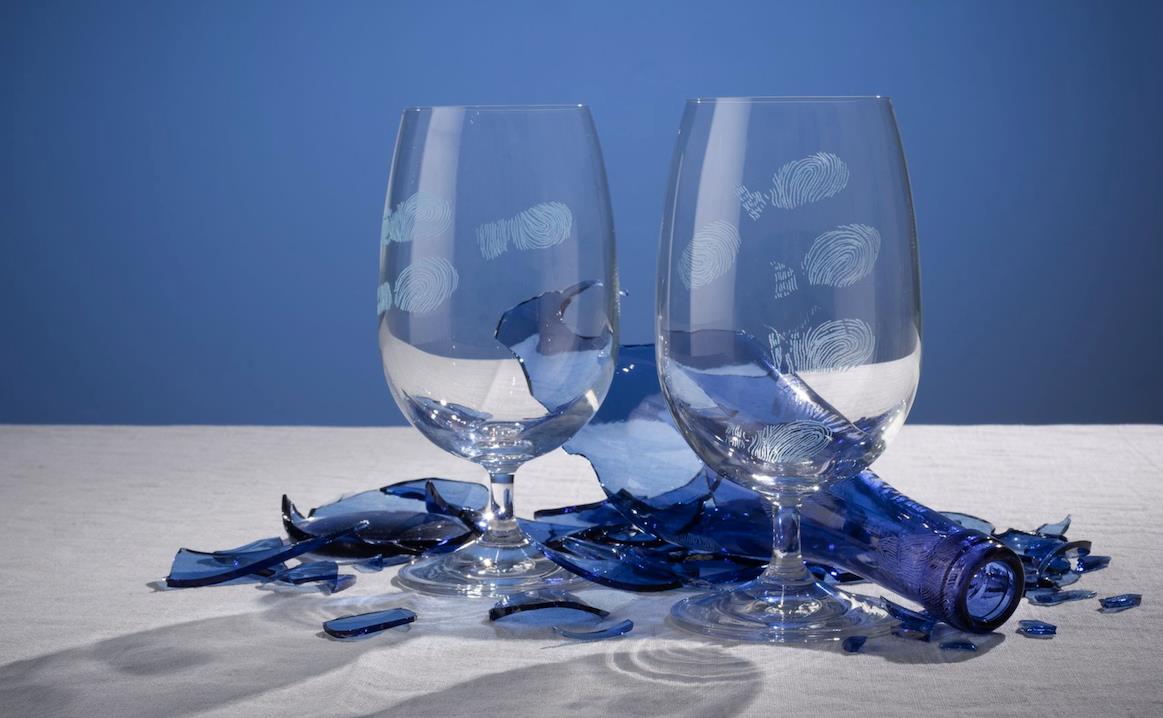For anyone who has tried to photograph their artworks, they will know that some works have magic in front of the lens and others don’t, regardless of the success of the work.
The same could be said of exhibitions. They don’t all sing in the physical space in the same way that they engage audiences from a conceptual viewpoint. A good example is Isolate Make: Creative Resilience in a Pandemic, an exhibition at the Australian Design Centre (ADC).
The very premise of this exhibition is work that has been made in isolation, and largely created through communication via means other than face-to-face engagement. Isolate Make explores how creatives adapted to isolation and production challenges, while still having to deliver work and sustain their practice.
The kit of material that supports the physical works, in some ways, is more interesting. Each object on display – while presented with a sensitive and well-honed quote by the maker – is really completed through a QR code, which delivers the viewer to a suite of writings and intimate interviews, videos conversations with the makers, and progress journals over the months of making.
The richness of content is superb and, if anything, offers a great insight into these objects normally just encountered in one dimension – a gallery space.
The joy of this exhibition – in keeping with the premise of the project – is that it can be viewed virtually. Not the exhibition itself with fancy fly-through technology or an augment viewing experience, but the studio experience and creation of the object.
This is a great example of how we can engage when we are told we can’t, physically.
The project got legs through a City of Sydney Cultural Resilience Grant, enabling nine artists to create new bodies.
They were: ceramicist Glenn Barkley, self-taught tapestry artists Crossing Threads (Lauren and Kass Hernandez), glass artist Kathy Elliott, Paper Engineer Benja Harney, textile artist Liz Payne, fashion and textile design practitioner Donna Sgro, multi-media Indigenous artist Lucy Simpson, and jeweller and installation artist Melinda Young.
Of note, is a suite of ceramics vessels by Glenn Barkely, perky and peppered with punchy colour and quirky additions; the impression of fingerprints on found glassware by Kathy Elliot and a stunning hanging textile work by Crossing Threads, which positioned next to the gallery window juxtaposes nature and the urban landscape in a raw and real confrontation.
That is clear in a statement by Kass Hernandez: ‘A key takeaway from this experience is how we prioritise our time and invest our energy in both our practice and the relationships we have. The act of creating can be healing… We are more cognisant of what projects we take on and in particular ones that garner connection; whether that is an exhibition space or collaborations.’
Barkley said of his experience: ‘I actually came out of the lockdowns better than I came in, as audiences and buyers pivoted to online sales… We also developed a lot of inline offerings like short videos and insta-stories.’
Read: Isolation is changing the face of arts e-commerce
Barkley had the goal of making one work a day during lockdown. ‘The works use patterns I made using simple press moulds I made from things around the house – shells, souvenirs and vintage Star Wars figures,’ he said, adding that text on his ceramics was drawn from song, several of which were by musicians who passed away during COVID.

Ceramics by Glen Barkley for Isolate Make project, installation view ADC. Photo ArtsHub.
In a similar way, Kathy Elliot turned to found objects, creating still life arrangements. The spin here however, was that she etched fingerprints on the surfaces.
She explains: ‘ As the weeks and months of COVID passed I became acutely aware of the objects and surfaces around me. Who had touched the surfaces I was touching? Had the glasses and cups been washed well? … I wanted to make visible the fears I was having about what I perceived as the invisible dangers around me.’
A highlight of the exhibition – and a separate exhibition in itself – is the Design / Isolate book project.
ADC Director Lisa Cahill came up with the idea back in March, when Australia first moved into lockdown, to send 100 journals to 100 creative people and ask them to document something of their time during isolation in an analogue as opposed to digital form.

Installation view Design / Isolate at Australian Design Centre. Photo ArtsHub.
Displayed in both wall based and floor based vitrines, these journals map out the year from flooding rains, droughts and fires; to isolation and fear; to personal and collective responses to Black Lives Matter, and of course, what resilience might look like.
They also demonstrate how design might contribute to recovery post-pandemic.
Nicole Monks says it best in a single Wajarri word in her journal: Nganggurnmanha – listening, hearing, thinking, remembering.
A particularly nice touch to this display is an intimate video ‘booth’ where you look down upon a selection of individual journals that are thumbed through by gloved hands – the feeling is that they could well be your own.

Installation detail, Design / Isolate at Australian Design Centre. Photo ArtsHub.
The project is on track for acquisition with a major institution as a document for 2020.
I encourage you to spend some time with these projects on ADC’s website – it is an insightful example of how we, as galleries and curators, can approach journaling our times.
3½ out of 5 stars ★★★☆
Design / Isolate, and
Isolate Make: Creative Resilience in a Pandemic
Australian Design Centre (ADC), Sydney
26 November – 27 January 2021
Both projects are part of Sydney Festival programming





